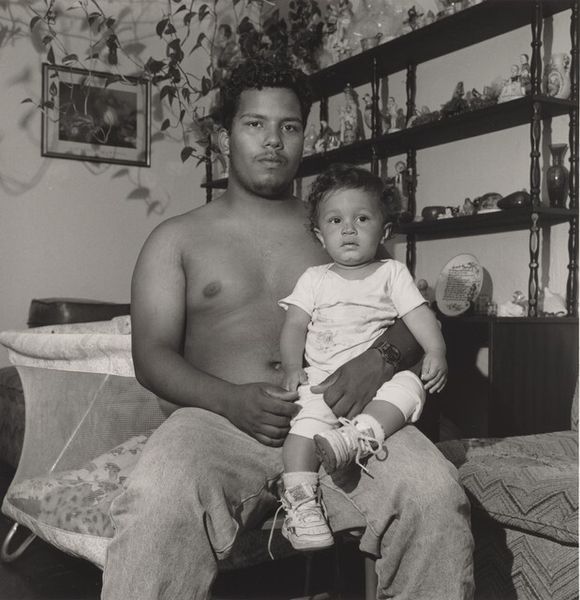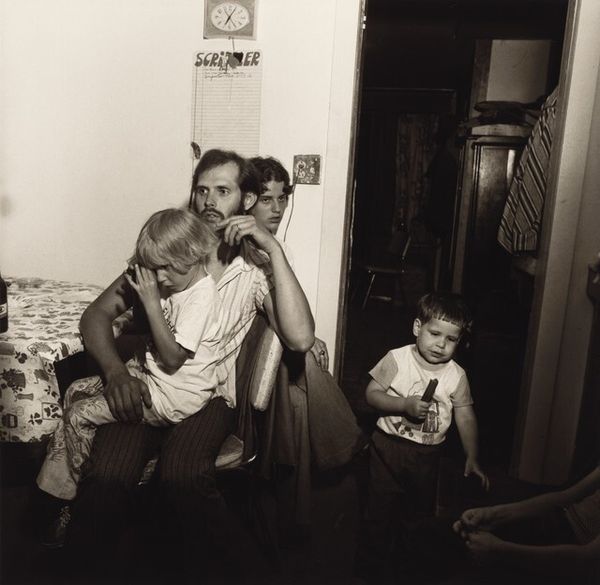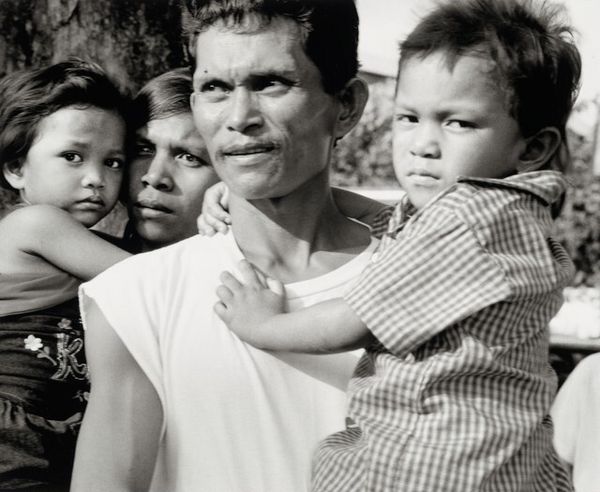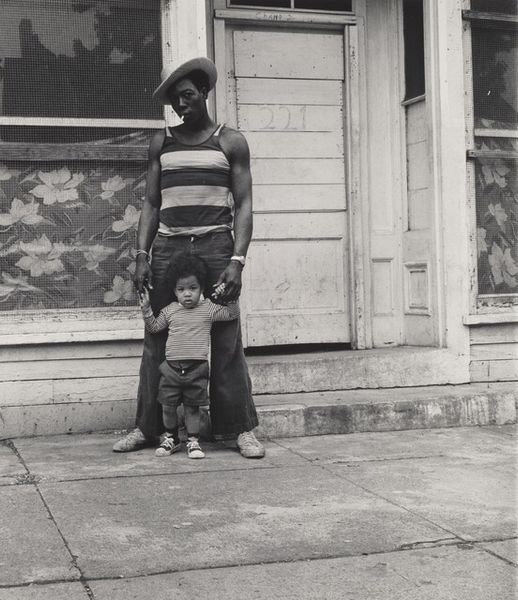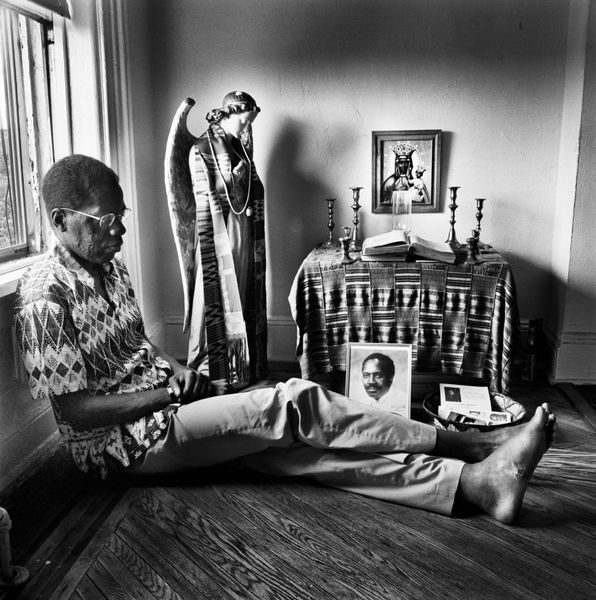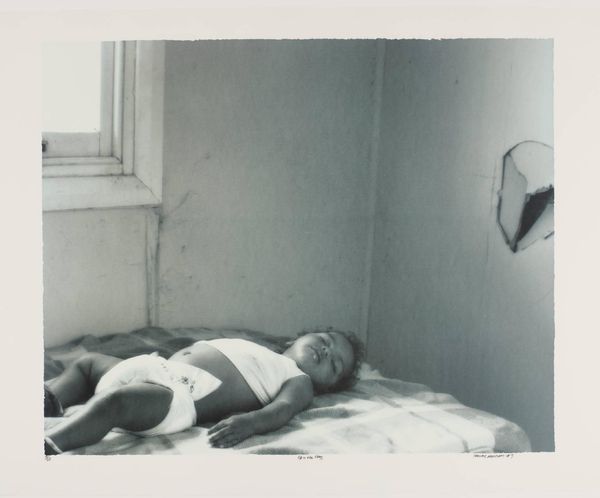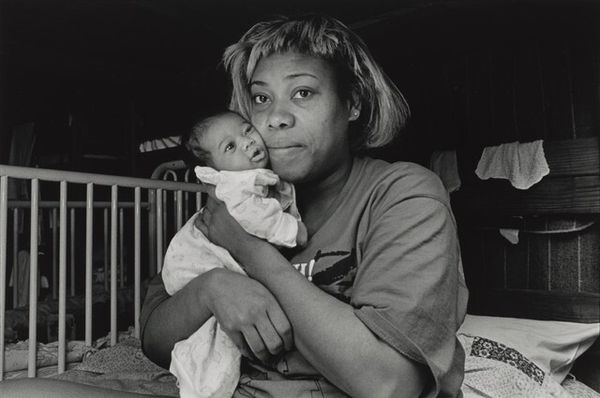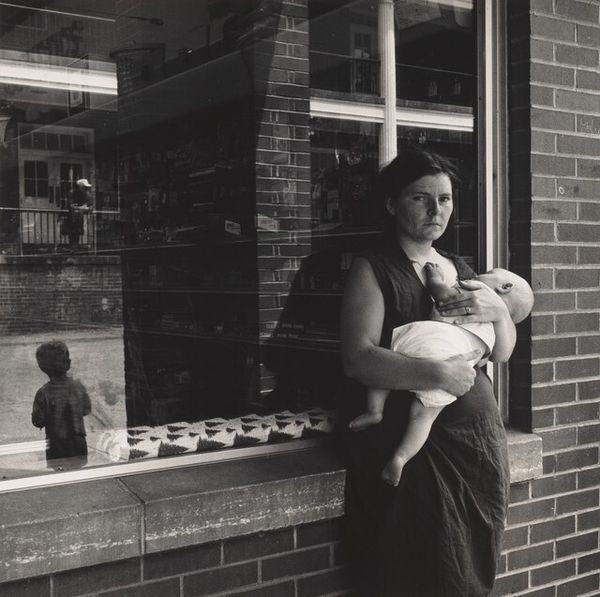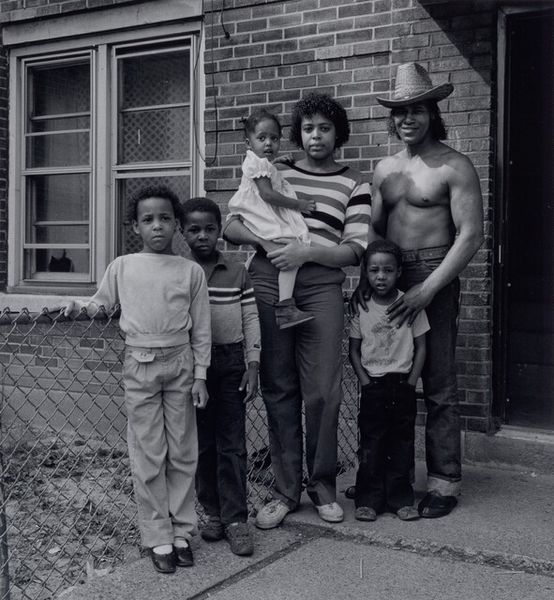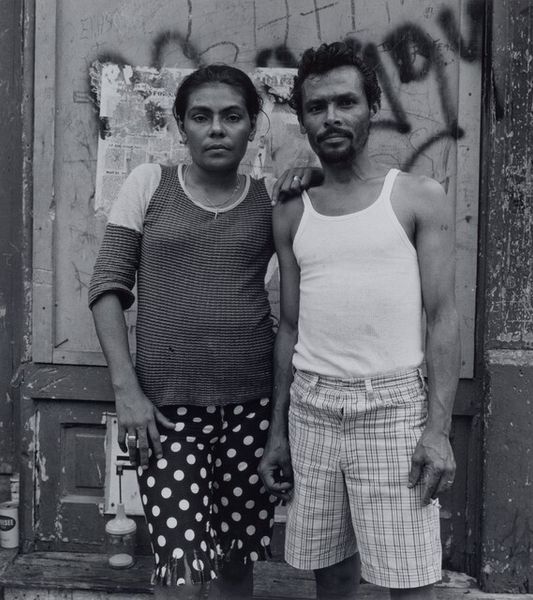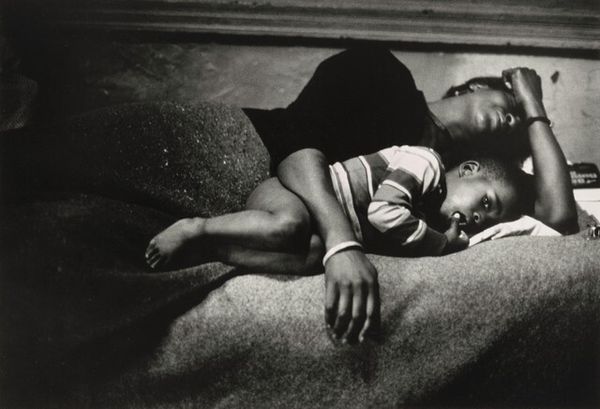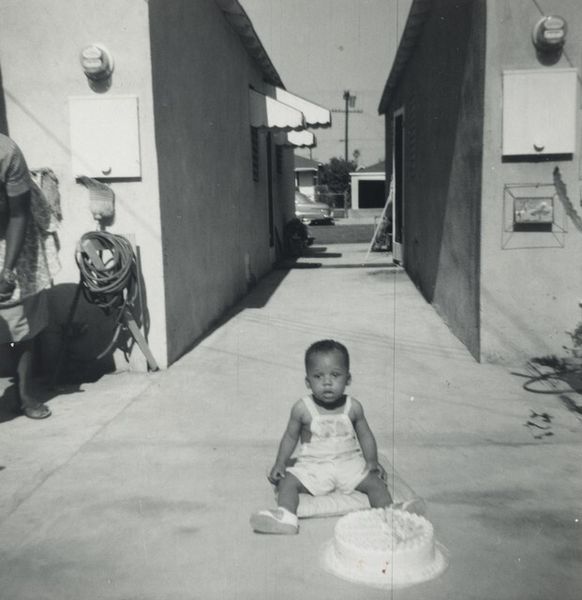
Robert "Chino" Montalvo as a Baby (Lower West Side series) 1973
0:00
0:00
photography, gelatin-silver-print
#
portrait
#
black and white photography
#
photography
#
historical photography
#
black-arts-movement
#
black and white
#
gelatin-silver-print
#
monochrome photography
#
genre-painting
#
monochrome
#
realism
Dimensions: image: 16.9 x 16.2 cm (6 5/8 x 6 3/8 in.) mount: 35.5 x 27.9 cm (14 x 11 in.)
Copyright: National Gallery of Art: CC0 1.0
Editor: This arresting black and white photograph, "Robert 'Chino' Montalvo as a Baby," was taken by Milton Rogovin in 1973 as part of his Lower West Side series. The textures throughout are incredible, but I’m particularly struck by the layered symbolism within such an intimate domestic scene. What jumps out at you when you look at this image? Curator: The immediate draw is the tenderness captured – a father’s protective hold. Yet, behind them hangs what appears to be a devotional print of Jesus. It creates a powerful juxtaposition, doesn’t it? The divine figure looking down on earthly bonds of family. Think about the layers here: hope, faith, continuity. The image operates on so many levels, doesn't it? Editor: It does. The peeling paint on the door adds another layer of complexity. Curator: Exactly! It’s about memory, history. Consider what these visual symbols might have meant within the context of Rogovin’s larger project documenting working-class communities. Is it possible this choice reflects resilience? Is it perhaps mirroring something about the hopes the father has for his child? Editor: The way Rogovin frames the composition definitely makes me think about the hope for a brighter future, despite the hard realities of daily life. The way he looks into the camera is piercing. Curator: Indeed. That direct gaze anchors the entire photograph. There’s a shared humanity; Rogovin clearly connected with his subjects. He understood their emotional landscape. The presence of both the divine image and that worn door reminds us that even the humblest domestic space contains immense history. How do these visual symbols make you think differently about the social context of this photograph? Editor: It emphasizes the enduring nature of faith, family, and hope, even amidst hardship. Seeing the photograph this way has made me more appreciative of the hidden narratives in everyday images.
Comments
No comments
Be the first to comment and join the conversation on the ultimate creative platform.
